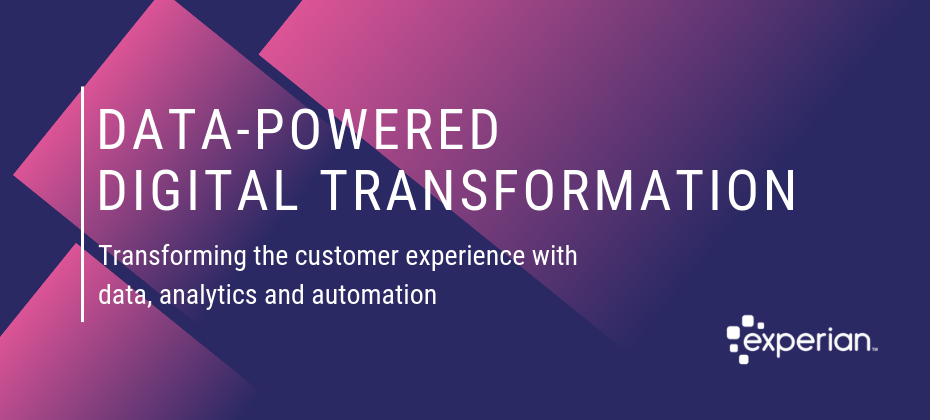Tag: digital transformation

In today’s digital-first environment, fraud threats are growing in sophistication and scope. It’s critical for credit unions to not only understand the specific threats presented by life online, but to also be prepared with a solid fraud detection and prevention plan. Below, we’ve outlined a few fraud trends that credit unions should be aware of and prepared to address. 2021 Trends to Watch: Digitization and the Movement to Life Online Trend #1: Digital Acceleration As we look ahead to the rest of 2021 and beyond, we expect to see adoption of digital strategies nearing the top of credit unions’ list of priorities. Members’ expectations for their digital experience have permanently shifted, and many credit unions now have members using online channels who traditionally wouldn’t have. This has led to a change in the types of fraud we see as online activities increased in volume. Trend #2: First-Party Fraud is On the Rise First party fraud is on the rise – 43% of financial executives say that mule activity is up 10% or more compared to attack rates prior to the pandemic, according to Trace Fooshee, Senior Analyst for Aite Group, and we expect to see this number grow. The ability for credit unions to identify and segregate the “good guys” from “bad guys” is getting more difficult to discern and this detail is more important than ever as credit unions work to create frictionless digital experiences by using digital tools and strategies. Trend #3: Continual Uptick in Synthetic Identity Fraud We expect synthetic identity fraud (SID) to continue to rise in 2021 as cybercriminals become more sophisticated in the digital space and as members continue with their new digital habits. Additionally, fraudsters can use SIDs to bring significant damage and loss to credit unions through fraudulent checks, debit cards, person-to-person and automated clearing house (ACH) transactions. More and more, fraudsters are seen opening accounts and remaining very patient – using an account to build and nurture a trusted relationship with the credit union and then remain dormant for two years before ensuing in any sort of abuse. Once the fraudster feels confident that they can bypass authentication processes or avoid a new product vetting, oftentimes, they will take that opportunity to get easy access to all solutions credit unions have available and will abuse them all at once. There are no signs of fraud slowing, so credit unions will need to stay vigilant in their fraud protection and prevention plans. We’ve outlined a few tips for credit unions to help protect member data while reducing risk. The Fight Against Fraud: Four Key Tips Tip #1: Manage Each Fraud Type Appropriately Preventing and detecting fraud requires a multi-level solution. This can involve new methods for authenticating current and prospective members, as well as incorporating synthetic identity services and identity proofing throughout the member lifecycle. For example, credit unions should consider taking extra verification steps during the account opening process as a preventative measure to minimize SID infiltration and associated fraud losses. As credit unions continue down the path of digitization, it’s also important to add in digital signals and behavior-based verification, such as information about the device a consumer is logging in from to heighten defenses against bad actors. Tip #2: Be Resourceful In the wake of the COVID-19 pandemic, many have asked, “How should credit unions approach fraud prevention tactics when in-person contact is limited or unavailable?” In some cases, you might need to be willing to say no to requests or get creative and find other options. Sometimes, it takes leveraging current resources and using what’s readily available to allow for a binary decision tree. For example, if you’re suspicious of a dormant account that you think could be synthetic, call them, and ask yourself these questions: Did they answer? Was the phone still active? Send the account holder an email – did you get a reply? Is this a new member? Is this a new channel for the member? Could they have logged on to do this instead of calling the call center? Tip #3: Empower Members Through Education Members like to know that their credit unions are taking the necessary steps and applying the right measures to keep their data secure. While members might not want every detail, they do want to know that the security measures are there. Require the use of strong passwords, step-up authentication, and empower members with alerts, notifications, and card controls. Additionally, protect members by providing resources like trainings, webinars, and best practices articles, where they can learn about current cyber trends and how to protect their data. Tip #4: Trust Data Many credit unions rely on an employee’s decision to decide when to take action and what action to take. The challenge with this approach comes when the credit union needs to reduce friction for members or tighten controls to prevent fraud, because it’s extremely hard to know exactly what drove prior actions. A better alternative is to rely on scores and specific data. Tweaks to the scores or data points that drive actions allow credit unions to achieve the desired member experience and risk tolerance – just be sure to leverage internal experts help figure out those policies. By determining what conditions drive actions before the actions are taken (instead of doing it one case at a time) the decisions remain transparent and actionable. Looking for more insights around how to best position your credit union to mitigate and prevent fraud? Watch our webinar featuring experts from around the industry and key credit unions in this Fraud Insight Form hosted by CUES. Watch now Contact us

According to Experian’s latest Global Insights Report, 38% of consumers expect to increase their online activity in the next 12 months. The report also found that consumers continue to have high expectations for their online experience, and businesses are re-imagining the customer journey to reflect that need. This January, Experian surveyed 3,000 consumers and 900 businesses to explore the changes in consumer behavior and business strategy pre- and post-COVID-19. As consumers have embraced life online, they’ve continued to emphasize their feelings regarding the importance of protecting their information. More than half of consumers still consider security to be the most important factor in their digital experience – the same experience they have such high expectations of. Business are acting in turn, with more than half investing in fraud detection methods or software to reduce friction in the customer experience. Digital transformation is also highlighting the need to: Manage regulatory compliance Integrate security measures Ensure access to AI models Attract and manage customers Integrate automation solutions Download the report to get all the latest insights into consumer desires and business behaviors, and keep visiting the Insights blog for a deeper dive into US-specific findings. Download report

Over the last several weeks, I’ve shared articles about the problems surrounding third-party, first-party and synthetic identity fraud. To wrap up this series, I’d like to talk about account takeover fraud and how digital transformation has impacted it over the last year. What is account takeover fraud? Account takeover fraud is a form of identity theft that involves unauthorized access to a user’s online accounts to enable financial crimes. Criminals can obtain information in a number of ways, including the dark web, spyware and malware, and phishing to allow them to make unauthorized transactions with the user’s account. Fraudsters have made efforts to also gain control of mobile or email accounts so they can intercept one-time passwords or password change instructions to retain control of the account. Once fraudsters have control of one account, they can use it to access other personal information to breach additional accounts and graduate to full-scale identity theft. How does account takeover fraud impact me? Account takeover fraud is damaging to businesses and consumers. It leads to losses and well as resources invested to confirm fraud. The potential losses from account takeover fraud have spiked over the last year, in large part due to the opportunities created by the rapid increase of digital interactions and the influx of users interacting with merchants and financial institutions online for the first time. Aite research shows that 64% of financial institutions are seeing higher rates of ATO fraud attacks now than prior to the pandemic. – Trace Fooshee, Senior Analyst, Aite Group1 Account takeover can also be difficult to detect. Unlike credit card fraud where the true owner might quickly notice suspicious charges, an account takeover attack can go undetected for long periods of time. That’s because the criminal can change login and contact information, ensuring that the real accountholder doesn’t realize they’ve been compromised immediately. Solving the account takeover fraud problem A good account takeover fraud prevention strategy requires two things: frictionless customer experience and robust risk management. It’s clear that customers expect seamless interactions with merchants and lenders. At the same time, businesses need to be able to spot risky or suspicious behavior before a bad transaction occurs. That’s where a layered fraud management solution comes into play. With the right tools—including risk-based identity and device authentication and targeted step-up authentication—businesses can provide a good customer experience and only pull in staff for deeper investigations where necessary. With this strategy in place, businesses can easily recognize good customers and provide a more personalized experience, while at the same time combatting fraud – boosting growth and minimizing losses in the long run. I hope this series has helped provide insights into the different types of fraud and why each of them requires different treatment. To learn more about the risks of account takeover and how a layered fraud management solution can help protect your business and your customers, feel free to contact us. 1Key Trends Driving Fraud Transformation in 2021 and Beyond, Aite Group, December 2020

COVID-19 is not only shifting the way we work, live and think, but it is also reframing the conversation behind which metrics successful companies focus on. Having worked in marketing for various lenders, origination and funding milestones were prevalent in their marketing. However, during this unique time in mortgage when most lenders are shattering previous origination records, focus is now drawn to new performance indicators. Providing a seamless digital process A recent McKinsey survey determined that consumer and business digital adoption vaulted five years forward in a matter of eight weeks at the beginning of the pandemic. And while this is generally true for business, many mortgage lenders may not have had the time or resources to update and modernize their processes due to massive origination volumes. When volume is good, companies wait to update their technology – either due to an “if it isn’t breaking why fix it” mentality, or, in the case of unmanageable volume, lenders can’t fathom disrupting their processes. Lenders that proactively streamlined technology and focused on digital adoption before the pandemic are leveraging and benefitting from the current mortgage environment. For lenders that did not digitize in time, the high-volume environment highlights their inefficiencies and unscalable processes. Providing meaningful customer experiences Forward-thinking, resilient mortgage lenders are also tracking how effectively they can provide meaningful customer experiences, for both their borrowers as well as their internal customers – their employees. For borrowers, it could come in the form of enjoying a seamless mortgage experience, being proactively kept abreast of their loan status, and the ability to interact and communicate with the lender in a manner that works best for their style. For employees of the company, this can come from feeling valued and listened to, with relevant and useful communications and resources to rely on during these uncertain times. It also comes in the form of providing the right resources for employees to perform at a high level during these times when it matters the most and working efficiently without sacrificing quality. Investing in technology and your greatest asset, your employees, is the answer to how mortgage lenders can achieve these metrics which will help them stand out among their competition. As the refi heyday starts to show signs of impermanence, these differentiators will become more important than ever – and all lenders should be taking a proactive look now at how they can bridge their digital gaps. Mortgage lenders are coming out of 2020 with strong earnings and should look to allocate a part of these earnings towards ‘future-proofing’ through scalable technology that will ultimately reduce costs and continue to bring in qualified volume. Join Experian Mortgage in accelerating the mortgage evolution and learn how we can help bridge your technology gaps. Learn More

It’s clear that the digital transformation we experienced this year is here to stay. While there are many positives associated with this transformation – innovation, new ways to work, and greater online connectedness – it’s important that we review the risks associated with these trends as well. In late 2019 and throughout 2020, Experian surveyed consumers and businesses. We asked about online habits, expectations for information security and plans for future spending. Unsurprisingly, about half of consumers think they’ll continue to spend more online in the coming year. Those same consumers now have a higher expectation for their online experience than before the onset of COVID-19. Hand-in-hand with the online activity trends come increased risks associated with identity theft and fraud as criminals find new chances to steal information. In response to both of these trends, businesses and consumers want a balance between security and convenience. Our latest trends report dives into the new opportunities 2020 has created for fraud, and the opportunities to prevent identity theft or manipulation and the associated losses while building stronger relationships. Download the full North America Trends Report for a look into North American trends over the last year and to learn how fraud prevention and positive customer relationships are actually two sides of the same coin. North America Trends Report

The global pandemic has created major shifts in the ways companies operate and innovate. For many organizations, a heavy reliance on cloud applications and cloud services has become the new normal, with cloud applications being praised as “an unsung hero” for accommodating a world in crisis, as stated in an article from the Channel Company. However, cloud computing isn’t just for consumers and employees working from home. In the last few years, cloud computing has changed the way organizations and businesses operate. Cloud-based solutions offer the flexibility, reduced operational costs and fast deployment that can transform the ways traditional companies operate. In fact, migrating services and software to the cloud has become one of the next steps to a successful digital transformation. What is cloud computing? Simply put – it’s the ability to run applications or software from remote servers, hosted by external providers, also known as infrastructure-as-a-service (IaaS). Data collected from cloud computing is stored online and is accessed via the Internet. According to a study by CommVault, more than 93% of business leaders say that they are moving at least some of their processes to the cloud, and a majority are already cloud-only or plan to completely migrate. In a recent Forrester blog titled ‘Troubled Times Test Traditional Tech Titans,’ Glenn O’Donnell, Vice President, Research Director at Forrester highlights that “as we saw in prior economic crises, the developments that carried business through the crisis remained in place. As many companies shift their infrastructure to cloud services through this pandemic, those migrated systems will almost certainly remain in the cloud.” In short, cloud computing is the new wave – now more than ever during a crisis. But what are the benefits of moving to the cloud? Flexibility Cloud computing offers the flexibility that companies need to adjust to fluctuating business environments. During periods of unexpected growth or slow growth, companies can expand to add or remove storage space, applications, or features and scale as needed. Businesses will only have to pay for the resources that they need. In a pandemic, having this flexibility and easy access is the key to adjusting to volatile market conditions. Reduced operational costs Companies (big or small) that want to reduce costs from running a data center will find that moving to the cloud is extremely cost-effective. Cloud computing eliminates the high cost of hardware, IT resources and maintaining internal and on-premise data systems. Cloud-based solutions can also help organizations modernize their IT infrastructures and automate their processes. By migrating to the cloud, companies will be able to save substantial capital costs and see a higher return on investment – while maintaining efficiency. Faster deployment With the cloud, companies get the ability to deploy and launch programs and applications quickly and seamlessly. Programs can be deployed in days as opposed to weeks – so that businesses can operate faster and more efficiently than ever. During a pandemic, faster deployment speeds can help organizations accommodate, make updates to software and pivot quickly to changing market conditions. Flexible, scalable, and cost-effective solutions will be the keys to thriving during and after a pandemic. That’s why we’ve enhanced a variety of our solutions to be cloud-based – to help your organization adapt to today’s changing customer needs. Solutions like our Attribute Toolbox are now officially on the cloud, to help your organizations make better, faster, and more effective decisions. Learn More

The shift created by the COVID-19 pandemic is still being realized. One thing that we know for sure is that North American consumers’ expectations continue to rise, with a focus on online security and their digital experience. In mid-September of this year, Experian surveyed 3,000 consumers and 900 businesses worldwide—with 300 consumers and 90 businesses in the U.S.—to explore the shifts in consumer behavior and business strategy pre- and post-COVID-19. More than half of consumers surveyed continue to expect more security steps when online, including more visible security measures in place on websites and more knowledge about how their data is being protected and stored. However, those same consumers aren’t willing to wait more than 60 seconds to complete an online transaction making it more important than ever to align your security and experience strategies. While U.S. consumers are optimistic about the economy’s recovery, they are still dealing with financial challenges and their behaviors have changed. Future business plans should take into account consumers’: High expectations of their online experience Increases in online spending Difficulty paying bills Reduction in discretionary spending Moving forward, businesses are focusing on use of AI, online security, and digital engagement. They are emphasizing revenue generation while looking into the future of online security. Nearly 70% of businesses also plan to increase their fraud management budgets in the next 6 months. Download the full North America Insights Report to get all of the insights into North American business and consumer needs and priorities and keep visiting the Insights blog in the coming weeks for a look at how trends have changed from early in the pandemic. North America Insights Report Global Insights Report

The financial services industry is not always synonymous with innovation and forward-thinking. While there are some exceptions with top-10 banks and some savvy regionals, as a whole, the sector tends to fall on the latter half of the diffusion of innovation curve, usually slotting in the late majority or laggard phase. Conversely, the opposite is true for fintechs who have been an enormously disruptive force of change in financial services over the past 10 years. For many businesses, the pandemic has created uncertainty and an inability to conduct or generate business. However, the silver lining with COVID-19 might just be that it’s driving digital innovation across industries. Andreesen Horowitz, a venture capital firm, estimates businesses of all kinds are experiencing at least two years’ worth of digitization compressed into the last six months. And while they have been significantly impacted, for fintechs who were already pushing the envelope and challenging existing business models, COVID-19 suddenly accelerated financial services innovation into overdrive. Here are three challenges fintechs are answering in the wake of the COVID-19 health crisis. Digital Banking The first lockdowns flipped the digital switch in financial services. Seemingly overnight, banking moved digital. In April, new mobile banking registrations increased 200%, while mobile banking traffic rose 85%. Likewise, Deloitte reported online banking activity has increased 35% since the pandemic started. Being mobile-first or digital-only has allowed many fintechs to win in offering presentment, activation, underwriting, and a contextual digital interface, all capabilities that will only become more relevant as the pandemic stretches on. At Square, direct deposit volumes grew by three times from March to April, up to $1.3 billion; Chime saw record signups. Continued social distancing will only serve to accelerate customers’ use of mobile and online platforms to manage their finances. Contactless Payments Similar to digital banking as a whole, the health crisis has accelerated the necessity for contactless payments. Whereas convenience and a seamless customer experience may have been drivers for payments innovation in the past, now, many customers may view it as a life or death health concern. Phones, wearables and even connected vehicles are empowering customers to participate in commerce while avoiding handling cash or coming in contact with an infected surface. Through their adoption of IOT-powered contactless payments, fintechs are accelerating this area of financial services to keep customers safe. Financial Inclusion and Speeding Economic Relief Any disaster disproportionally affects the underbanked and those living at the poverty line, and COVID-19 is no different. While it will undoubtedly contribute to an increase in unbanked households, the pandemic may also provide an opportunity to innovate through this problem. Financial inclusion was already a focus for many fintechs, who’ve made it their mission to bring equity by offering basic financial services in a transparent way. Unencumbered by legacy systems and business models, fintechs are well positioned to work across the financial ecosystem, from financial services, retail and government to efficiently and more quickly distribute benefits to at-risk groups and impacted businesses. From their ability to quickly ingest new and novel data sources, to a focus on using a digital-first approach to delight customers, fintechs will continue to harness their strengths to disrupt financial services, even during the pandemic. How is your fintech driving innovation and customer experience during the health crisis? Learn more

The economic impact of the COVID-19 health crisis is ever-evolving and requires great flexibility and planning from lenders. Shannon Lois, Experian’s Senior Vice President, Analytics, Consulting and Operations, discusses what lenders can expect and next steps to take. Q: Though COVID-19 is catalyzing a sharp economic slowdown, many experts expect it to be temporary and liken it more to a global natural disaster than the prior financial crisis. What are your reactions? SL: There is still debate as to whether we will have a U-shaped or a V-shaped recession and its probable severity and longevity. Regardless, we are in a recession caused by a health pandemic with uncertainty of what it will mean for our global economy and without a clear view as to when it will end. The sooner we can contain the virus the more it will help to curtail the size of the recession. The unemployment rates and the consumer lack of confidence in the future will continue to contract spending which in turn will continue to propagate the recession. Our ability to limit COVID-19 over the coming months will have a direct impact in the economy, although the effects will probably linger on for six or more months. Q: From an economic perspective, what are the current trends we’re seeing? SL: Unemployment has skyrocketed and every business sector has been impacted although with different degrees of severity. In particular, tourism/hospitality, airlines, automotive, consumer products and retail have suffered. Consumers’ financial status varies and will continue to fluctuate, and credit conditions tighten while welfare payments increase. The government programs that have started will help, but they’re not enough to counter a prolonged recession. As some states seek to reopen and others extend their shelter in place orders, we will continue to see economic changes, with different sectors bouncing back or dipping further depending on their geographic location. Q: How does the economic slowdown compare to what we may have expected previously? SL: This recession is different than anything we have encountered previously not only because of the health concerns and implication of our population but because of the uncertainty of it all. As an example, social distancing has significantly and immediately impacted consumer demand but overall it is their low confidence in the future that will cause a continuous drop in discretionary and non-discretionary spending. Not only do we have challenges on the demand side, we also are seeing the same on the supply side with no automotive manufacturing occurring in the USA, and international oil flooding the market causing negative impact on domestic oil and the broad energy market. Q: How do the unemployment and liquidity challenges come into play? SL: The unemployment rate has already jumped to a record high. Most consumers are facing liquidity and affordability challenges and businesses do not have enough cash reserves to sustain them. Consumer activity has shifted drastically across all channels while lenders are exercising more caution. If this is a V-shaped recession (and hopefully it will be), then most activity is bound to spring back quickly in Q3. With companies safeguarding some jobs and the help of governments’ supplemental programs, businesses will restore supply and consumer demand will get a kick start. Q: What is the smartest next play for financial institutions? SL: The path forward requires several steps. First, understand your customers, existing and new. Refine your policies with the right information around your customers’ financial situations and extend programs (forbearance and loan payment forgiveness) as needed under the right guidelines. It’s also important to use refreshed data to lend to consumers and businesses who need it now more than ever, with the proper policies and fraud checks in place. Finally, increase your agility to operate effectively and dynamically with automation, interactive communication and self-serving digital tools. Experian is committed to helping lenders throughout these uncertain times. For more resources, visit our Look Ahead 2020 Resource Hub. Learn more About Our Expert Shannon Lois, Senior Vice President, Analytics, Consulting and Operations, Decision Analytics Shannon and her team of analysts, scientists, credit, fraud and marketing risk management experts provide results-driven consulting services and state-of-the-art advanced analytics, science and data products to clients in a wide range of businesses, including banking, auto, credit, utility, marketing and finance. Prior to her current role, she founded the Advisory Services practice at Experian, driving to actionable and proven solutions for our clients’ most pressing business problems.

In today’s ever-changing and hypercompetitive environment, the customer experience has taken center-stage – highlighting new expectations in the ways businesses interact with their customers. But studies show financial institutions are falling short. In fact, a recent study revealed that 94% of banking firms can’t deliver on the “personalization promise.” It’s not difficult to see why. Consumer preferences have changed, with many now preferring digital interactions. This has made it difficult for financial institutions to engage with consumers on a personal level. Nevertheless, customers expect seamless, consistent, and personalized experiences – that’s where the power of advanced analytics comes into play. It’s no secret that using advanced analytics can enable businesses to turn rich data into insights that lead to confident business decisions and strategy development. But these business tools can actually help financial institutions deliver on that promise of personalization. According to an Experian study, 90% of organizations say that embracing advanced analytics is critical to their ability to provide an excellent customer experience. By using data and analytics to anticipate and respond to customer behavior, companies can develop new and creative ways to cater to their audiences – revolutionizing the customer experience as a whole. It All Starts With Data Data is the foundation for a successful digital transformation – the lack of clean and cohesive datasets can hinder the ability to implement advanced analytic capabilities. However, 89% of organizations face challenges on how to effectively manage and consolidate their data, according to Experian’s Global Data Management Research Benchmark Report of 2019. Because consumers prefer digital interactions, companies have been able to gather a vast amount of customer data. Technology that uses advanced analytic capabilities (like machine learning and artificial intelligence) are capable of uncovering patterns in this data that may not otherwise be apparent, therefore opening doors to new avenues for companies to generate revenue. To start, companies need a strategy to access all customer data from all channels in a cohesive ecosystem – including data from their own data warehouses and a variety of different data sources. Depending on their needs, the data elements can come from a third party data provider such as: a credit bureau, alternative data, marketing data, data gathered during each customer contact, survey data and more. Once compiled, companies can achieve a more holistic and single view of their customer. With this single view, companies will be able to deliver more relevant and tailored experiences that are in-line with rising customer expectations. From Personalized Experiences to Predicting the Future The most progressive financial institutions have found that using analytics and machine learning to conquer the wide variety of customer data has made it easier to master the customer experience. With advanced analytics, these companies gain deeper insights into their customers and deliver highly relevant and beneficial offers based on the holistic views of their customers. When data is provided, technology with advanced analytic capabilities can transform this information into intelligent outputs, allowing companies to optimize and automate business processes with the customer in mind. Data, analytics and automation are the keys to delivering better customer experiences. Analytics is the process of converting data into actionable information so firms can understand their customers and take decisive action. By leveraging this business intelligence, companies can quickly adapt to consumer demand. Predictive models and forecasts, increasingly powered by machine learning, help lenders and other businesses understand risks and predict future trends and consumer responses. Prescriptive analytics help offer the right products to the right customer at the right time and price. By mastering all of these, businesses can be wherever their customers are. The Experian Advantage With insights into over 270 million customers and a wealth of traditional credit and alternative data, we’re able to drive prescriptive solutions to solve your most complex market and portfolio problems across the customer lifecycle – while reinventing and maintaining an excellent customer experience. If your company is ready for an advanced analytical transformation, Experian can help get you there. Learn More

AI, machine learning, and Big Data – these are no longer just buzzwords. The advanced analytics techniques and analytics-based tools that are available to financial institutions today are powerful but underutilized. And the 30% of banks, credit unions and fintechs successfully deploying them are driving better data-driven decisions, more positive customer experiences and stronger profitability. As the opportunities surrounding advanced analytics continue to grow, more lenders are eager to adopt these capabilities to make the most of their datasets. And it’s understandable that financial institution are excited at the possibilities and insights that advanced analytics can bring to their business. However, there are some key considerations to keep in mind as you begin this important digital transformation. Here are three things you should do as your financial institution begins its advanced analytics journey. Ensure consistent and clean data quality Companies have a plethora of data and information on their customers. The main hurdles that many organizations face is being able to turn this information into a clean and cohesive dataset and formulating an effective and long-term data management strategy. Trying to implement advanced analytic capabilities while lacking an effective data governance strategy is like building a house on a poor foundation – likely to fail. Data quality issues, such as inconsistent data, data gaps, and incomplete and duplicated data, also haunt many organizations, making it difficult to complete their analytics objectives. Ensuring that issues in data quality are managed is the key to gaining the correct insights for your business. Establish and maintain a single view of customers The power of advanced analytics can only be as strong as the data provided. Unfortunately, many companies don’t realize that advanced analytics is much more powerful when companies are able to establish a single view of their customers. Companies need to establish and maintain a single view of customers in order to begin implementing advanced analytic capabilities. According to Experian research, a single customer view is a consistent, accurate and holistic view of your organization’s customers, prospects, and their data. Having full visibility and a 360 view into your customers paves the way for companies to make personalized, relevant, timely and precise decisions. But as many companies have begun to realize, getting this single view of customers is easier said than done. Organizations need to make sure that data should always be up-to-date, unique and available in order to begin a complete digital transformation. Ensure the right resources and commitment for your advanced analytics initiative It’s important to have the top-down commitment within your organization for advanced analytics. From the C-suite down, everyone should be on the same page as to the value analytics will bring and the investment the project might require. Organizations that want to move forward with implementing advanced analytic capabilities need to make sure to set aside the right financial and human resources that will be needed for the journey. This may seem daunting, but it doesn’t have to be. A common myth is that the costs of new hardware, new hires and the costs required to maintain, configure, and set up new technology will make advanced analytics implementation far too expensive and difficult to maintain. However, many organizations don’t realize that it’s not necessary to allocate large capital expenses to implement advanced analytics. All it takes is finding the right-sized solution with configurations to fit the team size and skill level in your organization. Moreover, finding the right partner and team (whether internal or external) can be an efficient way to fill temporary skills gaps on your team. No digital transformation initiative is without its challenges. However, beginning your advanced analytics journey on the right footing can deliver unparalleled growth, profitability and opportunities. Still not sure where to begin? At Experian, we offer a wide range of solutions to help you harness the full power and potential of data and analytics. Our consultants and development teams have been a game-changer for financial institutions, helping them get more value, insight and profitability out of their data and modeling than ever before. Learn More

As credit unions look to grow their loan portfolios and acquire new members, improving the member experience is critical to the process and remains a primary focus. In order to compete in the lending universe, financial tools that empower and enable a positive experience are critical to meeting these requirements. That being said, an Experian study reveals that 90% of executives agree that embracing a digital transformation is critical to providing excellent experiences. In this connected, data-driven world, digital transformations are opening the door for better and greater opportunities. With data and analytics, credit unions will be able to gain data-driven insights, to identify key channels of member engagement, create complete member views and further maximize growth and lending strategies. Data-driven organizations that can anticipate their members’ needs and preferences will be able to deepen relationships and maintain relevance – gaining an edge in a highly-competitive environment. The digital revolution is happening now – and it’s time for future-focused credit unions to adapt to changing expectations. However, according to an Experian report, 39% of organizations lack the customer insight and data required to provide these member experiences. That’s where Experian comes in. Join Mike Thibodeaux, Experian’s Senior Director, Fraud and Identity Sales Engineers, for a breakout session at CUNA Lending 2019 on Monday, Nov. 4 at 1:45 p.m. or 3:15 p.m. He will take a closer look at best practices and digital tools that credit unions can use to maximize credit union membership growth, while managing and mitigating fraud. The discussion will revolve around multiple topics, critical to the member experience conversation, including: Increasing profitable loan growth Lending deeper to the underserved Levering digital services and tools for your credit union Minimizing fraud activity (specifically synthetic identity fraud) and credit losses Enhancing and maintaining positive member experiences Experian is excited to once again take part in the 2019 CUNA Lending Council Conference, an event that brings together the credit union movement’s best and brightest in lending. If you’re attending, make sure to engage and connect with our thought leaders at our booth and learn how we’re dedicated to helping credit unions of all sizes advance their decisioning and services. Our team is committed to being a trusted partner – providing solutions that enable you to further grow, protect and serve within your field of membership. Learn More

The future is, factually speaking, uncertain. We don't know if we'll find a cure for cancer, the economic outlook, if we'll be living in an algorithmic world or if our work cubical mate will soon be replaced by a robot. While futurists can dish out some exciting and downright scary visions for the future of technology and science, there are no future facts. However, the uncertainty presents opportunity. Technology in today's world From the moment you wake up, to the moment you go back to sleep, technology is everywhere. The highly digital life we live and the development of our technological world have become the new normal. According to The International Telecommunication Union (ITU), almost 50% of the world's population uses the internet, leading to over 3.5 billion daily searches on Google and more than 570 new websites being launched each minute. And even more mind-boggling? Over 90% of the world's data has been created in just the last couple of years. With data growing faster than ever before, the future of technology is even more interesting than what is happening now. We're just at the beginning of a revolution that will touch every business and every life on this planet. By 2020, at least a third of all data will pass through the cloud, and within five years, there will be over 50 billion smart connected devices in the world. Keeping pace with digital transformation At the rate at which data and our ability to analyze it are growing, businesses of all sizes will be forced to modify how they operate. Businesses that digitally transform, will be able to offer customers a seamless and frictionless experience, and as a result, claim a greater share of profit in their sectors. Take, for example, the financial services industry - specifically banking. Whereas most banking used to be done at a local branch, recent reports show that 40% of Americans have not stepped through the door of a bank or credit union within the last six months, largely due to the rise of online and mobile banking. According to Citi's 2018 Mobile Banking Study, mobile banking is one of the top three most-used apps by Americans. Similarly, the Federal Reserve reported that more than half of U.S. adults with bank accounts have used a mobile app to access their accounts in the last year, presenting forward-looking banks with an incredible opportunity to increase the number of relationship touchpoints they have with their customers by introducing a wider array of banking products via mobile. Be part of the movement Rather than viewing digital disruption as worrisome and challenging, embrace the uncertainty and potential that advances in new technologies, data analytics and artificial intelligence will bring. The pressure to innovate amid technological progress poses an opportunity for us all to rethink the work we do and the way we do it. Are you ready? Learn more about powering your digital transformation in our latest eBook. Download eBook Are you an innovation junkie? Join us at Vision 2020 for future-facing sessions like: - Cloud and beyond - transforming technologies - ML and AI - real-world expandability and compliance

Many may think of digital transformation in the financial services industry as something like emailing a PDF of a bank statement instead of printing it and sending via snail mail. After working with data, analytics, software and fraud-prevention experts, I have found that digital transformation is actually much more than PDFs. It can have a bigger and more positive influence on a business’s bottom line – especially when built on a foundation of data. Digital transformation is the new business model. And executives agree. Seventy percent of executives feel the traditional business model will disappear in the next five years due to digital transformation, according to recent Experian research. Our new e-book, Powering digital transformation: Transforming the customer experience with data, analytics and automation, says, “we live in a world of ‘evolve or fail.’ From Kodak to Blockbuster, we’ve seen businesses resist change and falter. The need to evolve is not new. What is new is the speed and depth needed to not only compete, but to survive. Digital startups are revolutionizing industries in months and years instead of decades and centuries.” So how do businesses evolve digitally? First, they must understand that this isn’t a ‘one-and-done’ event. The e-book suggests that the digital transformation life cycle is a never-ending process: Cleanse, standardize and enrich your data to create features or attributes Analyze your data to derive pertinent insights Automate your models and business practices to provide customer-centric experiences Test your techniques to find ways to improve Begin the process again Did you notice the key word or phrase in each of these steps is ‘data’ or ‘powered by data?’ Quality, reliable data is the foundation of digital transformation. In fact, almost half of CEOs surveyed said that lack of data or analytical insight is their biggest challenge to digital transformation. Our digital world needs better access to and insight from data because information derived from data, tempered with wisdom, provides the insight, speed and competitive advantage needed in our hypercompetitive environment. Data is the power behind digital transformation. Learn more about powering your digital transformation in our new e-book>